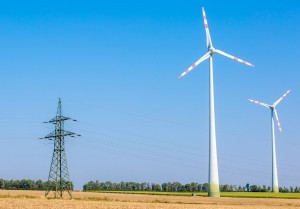31 January 2019
Networks and renewable energy: UFE at the service of the community


In accordance with the ESSOC bill, the French government presented to the Higher Energy Council (CSE) on January 22nd one ruling act and two decrees to simplify and accelerate the entry into force of the Regional Plans for Connecting Renewable Energy to the Network (S3REnR). UFE has held several consultations on this much-awaited topic, making it possible to find consensual positions and express proposals for improvement on the three texts, all of which were widely adopted by the CSE.
Behind the acronym S3REnR lies a major issue for the development of renewable energy at the local level. The use of electric infrastructures at their full potential, the proper planning of their development, the optimisation of costs and the connection delays are key factors in the success of the energy transition. This question concerns both renewable energy producers, grid operators and electricity consumers.
This is why, UFE, as a representative of the whole value chain of the electricity system, has long been discussing this topic, in order to bring the positions of various stakeholders closer together and to identify ways of improving this measure for the collective interest.
A strong consensus of the sector to move forward
On the main purpose of the reform, UFE recalled the support of all stakeholders to the process of simplification and acceleration initiated by the French government since the ESSOC bill. The shared objective is, for each region, to have, constantly, an “active” S3REnR in order to be able to make the investments needed to develop new renewable energy capacities. The procedures for developing, adapting and reviewing those regional plans should therefore not add an administrative bottleneck to the already long development timeframe of those projects. As such, the texts presented by the French government are going in the right direction.
Moreover, UFE supported several amendments to solve operational difficulties reported by local actors as particularly penalising for the connection of renewable energy to the network. This is the case with the crossing of railways or navigable tracks, which are part of lengthy and complex procedures. UFE proposed that network operators can now anticipate and pool together such works in the perspective of projects to be developed in an identified area, that will allow for significant time savings for each project concerned at a later stage. Another example of difficulty: repeated crossings of the same municipality when the renewable production and the electrical substation are located on either side of the town. UFE proposed to pool the funding of satellites electrical substations which will make it possible to cross only once the municipality, and consequently, to limit the impact of works on the roads and various difficulties for the residents (traffic difficulties, noise pollution…). These two amendments, both adopted unanimously by the CSE, received a favourable opinion from the government. This gives hope that they will actually come into force when the texts will be published.
More flexibility for a more renewable-based electricity system
To go further in the optimisation of the costs, UFE has also tabled an amendment introducing smart connection offers. This solution aims to propose, in specific configurations of the network, a connection that can occasionally limit the injected capacity, knowing that the producer always keeps the possibility to choose the reference offer guaranteeing maximum power injection. Experience feedback from experimental operations shows that the capping caused represents only a tiny loss of energy, largely offset by savings on the connection costs, and by the fact that, without this alternative, those projects would probably not have been launched. The sharing of those analyses and the debates among UFE members made it possible to build a consensus on the merits of this solution, largely adopted by the CSE and whose implementation will have to be translated by a ministerial decree.
More generally, everyone knows that sizing infrastructures by adding the maximum capacity of each means of production is synonymous of high additional costs for the community. Moreover, in an increasingly renewable-based electricity system, it is essential to take advantage of statistical effects of the injection of such variable energy in the grid. This optimised sizing of the shared structures will go hand in hand with a more reactive management of the electrical system, and also, some capping. If the merits of this principle are today widely recognized, all its operational and economical consequences were not sufficiently debated to find a common position among stakeholders. Thus, CSE members largely supported this solution but expressed some oppositions, which should encourage us to continue our effort in bringing position closer together.
On this topic as well as on the other ways to improve the connection of renewable energy to the network, UFE will continue its work as a common platform to bring closer together the various analysis and to propose solutions reconciling the interests of all the beneficiaries of the electricity system.
Find out more
02 June 2020
“Long live Europe”: it’s time for Europe!
25 February 2020
Brexit: love last 47 years


About us
The Union of the French Electricity Industry is the trade association of the French electricity sector. We bring together companies from the whole value chain of the electricity industry.
Find out more










